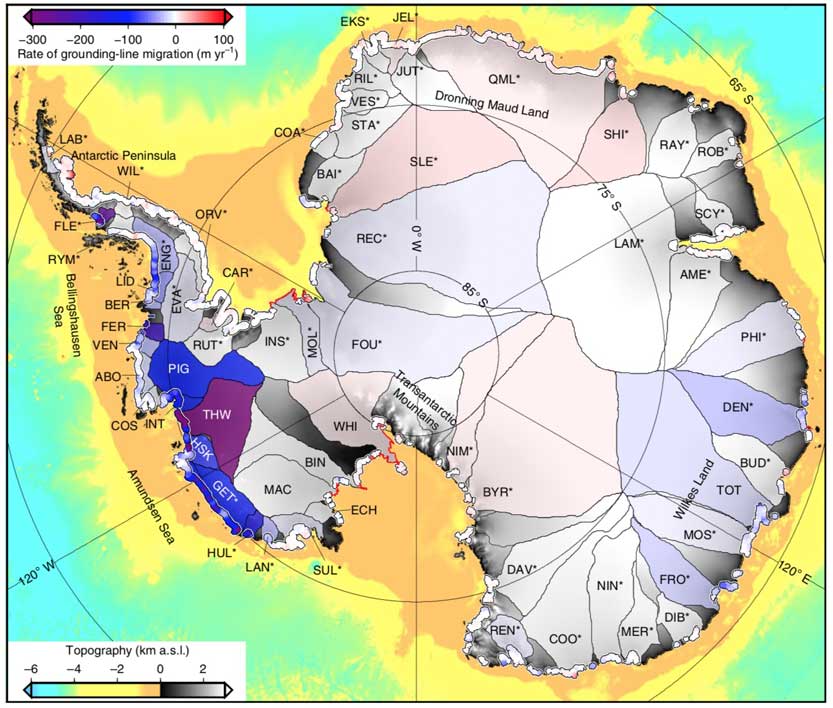The Antarctic region, often synonymous with desolation and glacial magnificence, is experiencing an unparalleled crisis. Climate change, largely anthropogenic in origin, has precipitated an alarming trend: the accelerated melting of glaciers across this icy continent. The ramifications of this phenomenon are profound, with implications extending far beyond the geographic confines of Antarctica. In this discourse, the various dimensions of this issue will be examined, encompassing the scientific underpinnings, ecological consequences, and socio-economic impacts, as well as potential mitigative strategies.
At the heart of the discourse lies an understanding of the basic science of glaciology. Glaciers, massive bodies of compressed ice residing on land, are sensitive indicators of climatic shifts. The Antarctic ice sheet is divided into two principal sections: the West Antarctic Ice Sheet (WAIS) and the East Antarctic Ice Sheet (EAIS). Glaciologists assert that the WAIS, which is notably less stable, is particularly susceptible to warming temperatures. This instability is attributed to the unique topographic features that allow warm ocean waters to seep beneath the ice, thereby accelerating its melting from below.
Satellite observations and aerial surveys have unveiled staggering statistics: the Antarctic ice sheet is currently shedding approximately 250 billion tons of ice annually. This rate of ice loss has persisted and, in many instances, escalated over the past few decades. Notably, key glaciers such as Thwaites and Pine Island have exhibited rapid retreat, with studies indicating that these glaciers may contribute significantly to future sea-level rise. The fundamental mechanisms at play are intricately related to surface melting and enhanced calving processes, both of which are intensifying concomitant to rising global temperatures.
Climate models project that without substantial mitigation efforts, the Antarctic ice sheet could contribute over three meters of global sea rise by the year 2100. Such a scenario poses a grave threat to low-lying coastal communities worldwide, wherein millions of individuals might face displacement and infrastructural damage. The implications are staggering; consider the global economic repercussions and potential loss of biodiversity. The melting glaciers could lead to saltwater intrusion into freshwater sources, complicating the already precarious balance of ecosystems dependent on freshwater supplies.
Ecological consequences stemming from glacier loss extend into intricate webs of biotic interactions. As glaciers recede, they expose land that has been frozen for millennia, leading to the emergence of new habitats. However, these changes often favor certain species over others, disrupting established ecological balances. The composition of marine organisms could also be altered as freshwater influxes and changes in salinity affect the distribution of species. Moreover, the stable, cold-water environments that characterize many Antarctic ecosystems are rendered increasingly hostile as temperatures rise, thus threatening the survival of uniquely adapted species such as the Adélie penguin and certain krill populations.
As the crisis unfolds, socio-economic considerations necessitate urgent attention. Governments, especially those in coastal areas, face mounting pressure to develop adaptive strategies to cushion the impacts of sea-level rise. The costing of inaction reveals a multifaceted view; projections indicate that adaptation costs could escalate into the trillions of dollars if proactive measures are not instituted. Investing in resilient infrastructure, enhancing flood defenses, and implementing comprehensive disaster response strategies are paramount. The challenge is monumental, requiring collaboration across national boundaries and sectors.
Furthermore, the psychological dimensions of climate change must not be overlooked. Communities grappling with the impending threat of sea-level rise may experience profound distress. The psychological toll of uncertainty regarding one’s home, community, and future can manifest in various ways, leading to increased rates of anxiety and depression. Engaging communities in climate adaptation initiatives can foster a sense of agency and resilience, mitigating some of these mental health challenges through collective action and shared purpose.
In light of such interwoven issues, the discourse around the Antarctic glaciers’ state calls for a robust response. Scientific communication must evolve to incorporate diverse narratives, uniting empirical evidence with lived experiences. Outreach efforts aimed at educating the public about the urgency of the climate crisis can stimulate grassroots movements and political will. Engaging with interdisciplinary fields, including sociology, psychology, and economics, can enrich the dialogue surrounding climate impact and adaptations.
Mitigative strategies play a crucial role in addressing the catastrophic trajectory of the Antarctic ice sheets. Global policies aimed at drastically reducing greenhouse gas emissions are imperative. Transitioning to renewable energy sources, improving energy efficiency, and advocating for sustainable practices must be prioritized. International cooperation is vital in this regard, as climate change knows no borders; it is imperative that nations work together to implement the Paris Agreement’s goals and strive for a sustainable future.
In conclusion, the current predicament facing Antarctica is emblematic of broader global environmental issues. Glaciers, as indicators of climate health, encapsulate the multifaceted challenges of climate change. The dire consequences of glacier retreat extend beyond the icy confines of the Antarctic, necessitating an integrated response that spans scientific inquiry, ecological preservation, socio-economic resilience, and psychological well-being. The time for action is now, and collaboration is essential for navigating the perilous waters ahead.












